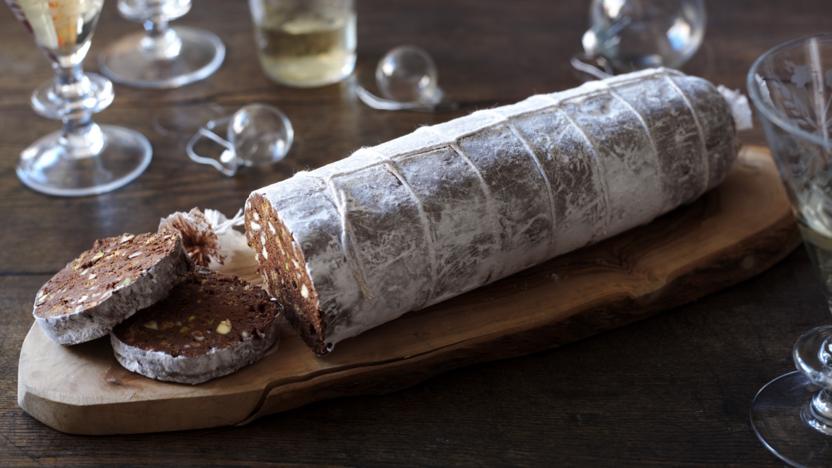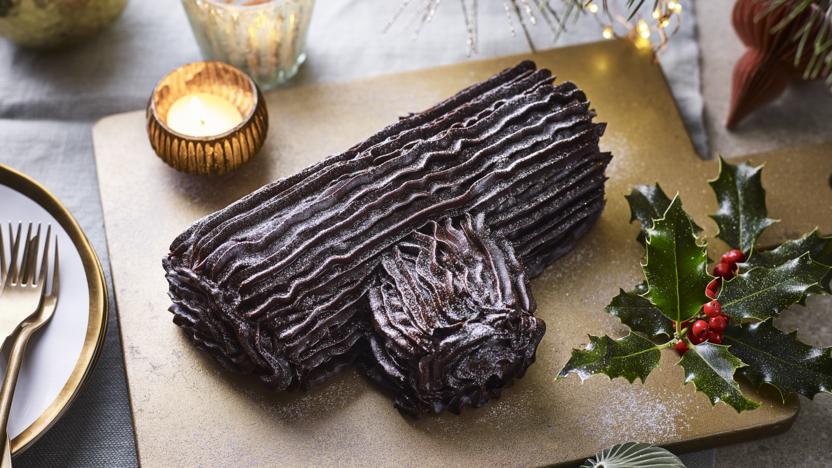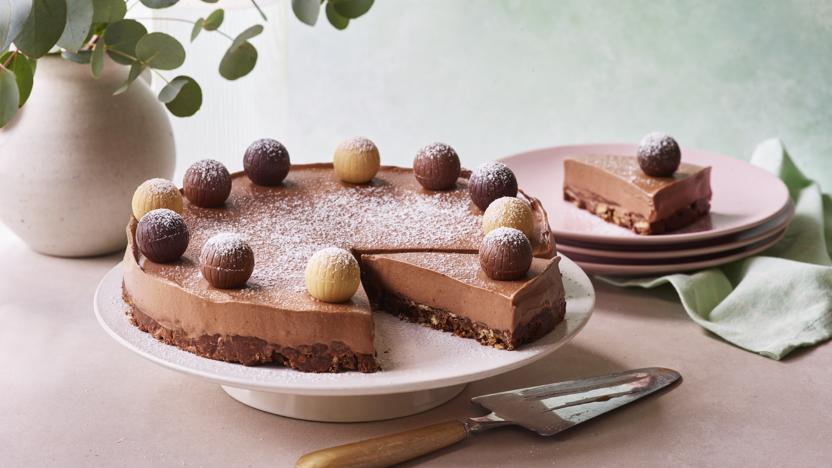Chocolate salame


I’ve encountered quite a few versions of chocolate salame in Italy – coming to the conclusion that it’s really an Italian version of our chocolate refrigerator cake. I am grateful here to Jacob Kenedy for his instructions on how to string up a finocchiona in the Bocca Cookbook.

Ingredients
- 250g/9oz dark chocolate (minimum 70% cocoa solids)
- 250g/9oz amaretti (crunchy ones) or rich tea biscuits
- 100g/3½oz unsalted butter, softened
- 150��/5½�dz� caster sugar
- 3 free-range eggs
- 2 tbsp amaretto liqueur
- 2 tbsp cocoa powder
- 75��/2½�dz� almonds, roughly chopped
- 75��/2½�dz� hazelnuts, roughly chopped
- 50g/2oz pistachios, roughly chopped
- 1 tbsp icing sugar, to decorate
Method
In the microwave (following the manufacturer’s instructions) or in a heatproof bowl suspended over a saucepan of simmering water (but not touching the water), melt the chocolate until smooth. While the chocolate’s melting, put the biscuits into a large freezer bag, seal and bash them with a rolling pin until you have a bag of rubble – not dust. When the chocolate’s melted, remove it to a cold place (not the fridge) and set aside to cool.
Cream the butter and sugar together: I do this in a freestanding mixer, but you don’t have to. You just need to use a large bowl and make sure the mixture is soft and superlight.
Gradually, and one by one, beat in the eggs. Don’t worry if the mixture looks curdled at this stage: all manner of ills will be righted once the chocolate is added later. Then beat in the amaretto liqueur.
Push the cocoa powder through a little sieve or tea strainer into the cooled chocolate, and, with a small rubber spatula, stir till combined, then beat this into the egg mixture too.
When you have a smooth chocolate mixture in front of you, tip in the chopped nuts and crushed biscuits. Fold these in firmly but patiently to make sure everything is chocolate-covered. Transfer this mixture, still in its bowl, to the fridge to firm up a bit for 20-30 minutes. Don’t leave it for much longer than this or it will be difficult to get out of the bowl to shape.
Unroll and slice off two large pieces of cling film, overlapping them, so that you have a large cling-covered surface to roll the chocolate salame out on. Tip the chocolate mixture out in the middle of this and – using your hands, messy though this is – mould the mixture into a fat salame-like log, approximately 30cm/12in long.
Cover the chocolate log completely with the cling film, and then firmly roll it, as if it were a rolling pin, to create a smooth, rounded cylinder from the rough log you started with. Twist the ends by grasping both ends of the cling film and rolling the sausage-log towards you several times. Then put it in the fridge for at least six hours – though preferably overnight – to set.
Now – one it’s set – for the exciting bit: tear off a large piece of greaseproof paper and lay it on a clear kitchen surface. Take the salame out of the fridge and sit it on the paper. Measure out a piece of string at least six times longer than the length of the salame, and tie one end of the string firmly round the twisted knot of cling film at one end of the salame. Then trim away as much cling film as you can, but without cutting either of the tapered, nose ends, so that you can attach the string to these.
Dust your hands with a little icing sugar and then rub two tablespoons of icing sugar (more if needed) over the unwrapped salame to stop it getting sticky as you string it up. Plus it makes it look more like a salame.
Make a loop with the string, a little wider than the salame, and feed it over the end of the salame, close to where it is tied on. Pull on the trailing end to tighten (but not too tightly) and form another loop of string as before. Work this second loop around the sausage, 4cm or so further along from the first, tighten again and repeat until you reach the far end of the salame, then tie the string firmly round the other twisted nose of cling film.
With your remaining length of string, start to feed it back along the salame, twisting it around the encircling string each time it crosses a loop, then tie it again when you come to the end. Repeat these lengths as many times as you want, to make the authentic-looking pattern, but two or three times would be enough to get the effect.
Transfer it to a wooden board, and cut some slices, fanning them out as if they were indeed slices of salame, leaving a knife on the board, too, for people to cut further slices, as they wish. Obviously, when you cut the salame, you will need to cut through the string, but the many knots and twists keep it securely tied. Serve fridge cold, or very near to it.



